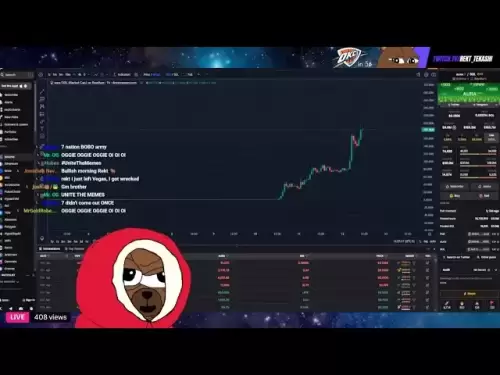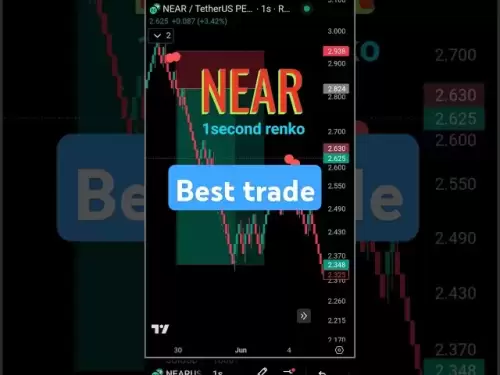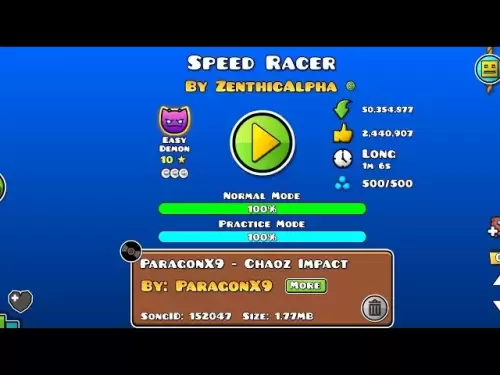-
 Bitcoin
Bitcoin $105,288.6945
-2.61% -
 Ethereum
Ethereum $2,546.9059
-7.84% -
 Tether USDt
Tether USDt $1.0004
0.05% -
 XRP
XRP $2.1438
-4.68% -
 BNB
BNB $653.2251
-1.80% -
 Solana
Solana $146.3449
-8.07% -
 USDC
USDC $0.9997
0.01% -
 Dogecoin
Dogecoin $0.1778
-5.94% -
 TRON
TRON $0.2688
-2.27% -
 Cardano
Cardano $0.6373
-7.04% -
 Hyperliquid
Hyperliquid $41.2776
-4.37% -
 Sui
Sui $3.0223
-9.71% -
 Chainlink
Chainlink $13.3280
-7.77% -
 Bitcoin Cash
Bitcoin Cash $430.6921
-2.12% -
 UNUS SED LEO
UNUS SED LEO $9.0426
1.98% -
 Avalanche
Avalanche $19.2275
-8.92% -
 Stellar
Stellar $0.2600
-5.55% -
 Toncoin
Toncoin $2.9984
-6.13% -
 Shiba Inu
Shiba Inu $0.0...01195
-5.71% -
 Hedera
Hedera $0.1566
-7.37% -
 Litecoin
Litecoin $84.6896
-5.28% -
 Polkadot
Polkadot $3.8188
-6.28% -
 Ethena USDe
Ethena USDe $1.0004
0.00% -
 Monero
Monero $311.9801
-3.66% -
 Dai
Dai $0.9998
0.00% -
 Bitget Token
Bitget Token $4.5149
-4.09% -
 Uniswap
Uniswap $7.4602
-6.13% -
 Pepe
Pepe $0.0...01088
-11.16% -
 Aave
Aave $280.9076
-8.02% -
 Pi
Pi $0.5699
-8.88%
Is the MA moving average above seven lines useful? Too many parameters will lag?
Using seven or more moving averages in crypto trading can capture multiple time frames but may cause lag and overfitting, requiring careful strategy balancing.
Jun 12, 2025 at 01:56 am

Introduction to Moving Averages in Cryptocurrency Trading
Moving averages (MAs) are fundamental tools used by traders in the cryptocurrency market to smooth out price data and identify trends over time. The most common types of moving averages include the simple moving average (SMA) and the exponential moving average (EMA). Traders often debate the optimal number of lines to use in their strategies, with some advocating for more complex systems involving multiple lines. The question arises: Is the MA moving average above seven lines useful? Too many parameters will lag? This article delves into the effectiveness of using multiple moving averages, focusing on systems with seven or more lines, and explores the potential for lag caused by too many parameters.
Understanding the Role of Multiple Moving Averages
Multiple moving averages can provide a more detailed view of market trends and potential reversal points. When traders use more than one moving average, they often look for crossovers between these lines to signal buy or sell opportunities. For instance, a common strategy involves using two or three moving averages, but some traders might use seven or more to capture a broader range of time frames and market dynamics.
Using seven or more moving averages can offer a comprehensive perspective on long-term, medium-term, and short-term trends. This approach can help traders identify the strength and direction of a trend across different time horizons. However, the complexity increases with the number of lines, and so does the potential for lag and false signals.
The Potential Benefits of Seven or More Moving Averages
One of the primary benefits of using seven or more moving averages is the ability to capture multiple time frames. For example, a trader might use a 10-day, 20-day, 50-day, 100-day, 200-day, 300-day, and 500-day moving average to monitor short-term, medium-term, and long-term trends simultaneously. This multi-timeframe analysis can help traders make more informed decisions by considering the broader market context.
Additionally, using multiple moving averages can help confirm trends. If several moving averages are aligned in the same direction, it can provide a stronger indication of a prevailing trend. This can be particularly useful in volatile markets like cryptocurrencies, where false signals are common.
The Drawbacks: Lag and Overfitting
Despite the potential benefits, using seven or more moving averages can introduce significant challenges. One of the main issues is lag. Moving averages, by their nature, are lagging indicators because they are based on historical data. The more lines a trader uses, the more data points are considered, which can increase the time it takes for the moving averages to reflect current market conditions.
Overfitting is another concern when using multiple moving averages. Overfitting occurs when a trading strategy is too closely tailored to historical data, resulting in poor performance in real-time trading. With seven or more moving averages, there is a higher risk of creating a strategy that performs well on past data but fails to adapt to new market conditions.
Practical Application: Setting Up Multiple Moving Averages
To set up a trading system with seven or more moving averages, traders need to carefully select the time frames and types of moving averages that best suit their strategy. Here's how to set up such a system:
- Choose the time frames: Decide on the specific time frames for each moving average. For example, you might use 10-day, 20-day, 50-day, 100-day, 200-day, 300-day, and 500-day moving averages.
- Select the type of moving average: Determine whether to use SMAs or EMAs. EMAs give more weight to recent prices and can be more responsive to market changes.
- Configure the trading platform: Most trading platforms allow you to add multiple indicators to your chart. Add each moving average to your chart, ensuring that each line is clearly distinguishable (e.g., different colors).
- Monitor and analyze: Regularly monitor the moving averages to identify crossovers and alignments that signal potential trading opportunities.
Balancing Complexity and Effectiveness
The key to effectively using seven or more moving averages is to balance complexity with practicality. While a complex system can provide detailed insights, it can also be overwhelming and lead to analysis paralysis. Traders should consider their trading style and risk tolerance when deciding whether to implement such a system.
Simplifying the system by focusing on key moving averages that align with your trading strategy can help mitigate the risks of lag and overfitting. For instance, you might focus on the 50-day, 100-day, and 200-day moving averages for medium-term trends while using the 10-day and 20-day moving averages for short-term signals.
Case Studies: Real-World Applications
To illustrate the use of seven or more moving averages, consider the following case studies:
Case Study 1: A trader uses a system with seven moving averages (10-day, 20-day, 50-day, 100-day, 200-day, 300-day, and 500-day) to trade Bitcoin. They look for instances where the shorter-term moving averages cross above the longer-term ones as a buy signal and vice versa for a sell signal. This approach helps them capture both short-term and long-term trends, but they notice that the system sometimes lags behind significant market movements.
Case Study 2: Another trader employs a similar system but focuses on Ethereum. They find that the system provides a comprehensive view of market trends but requires constant monitoring to avoid missing trading opportunities due to lag. They adjust their strategy by prioritizing the 50-day and 200-day moving averages for major trend signals while using the others for confirmation.
Frequently Asked Questions
Q: Can using seven or more moving averages be effective for day trading in the cryptocurrency market?
A: Using seven or more moving averages for day trading can be challenging due to the potential for lag. Day traders typically focus on short-term price movements, and the increased complexity of multiple moving averages may hinder quick decision-making. However, if a day trader can effectively manage the system and prioritize key moving averages for short-term signals, it could still be beneficial.
Q: How can traders minimize the risk of overfitting when using multiple moving averages?
A: To minimize the risk of overfitting, traders should regularly backtest their strategies using out-of-sample data and avoid fine-tuning their system to historical data. Additionally, using a diverse set of time frames and types of moving averages can help create a more robust strategy that adapts to different market conditions.
Q: Are there any specific cryptocurrencies where using seven or more moving averages is more effective?
A: The effectiveness of using seven or more moving averages can vary depending on the liquidity and volatility of the cryptocurrency. For highly liquid assets like Bitcoin and Ethereum, the system might be more effective due to the availability of more reliable data. However, for less liquid cryptocurrencies, the system might be less effective due to increased volatility and potential for false signals.
Q: How can traders use moving averages to identify potential support and resistance levels?
A: Moving averages can act as dynamic support and resistance levels. When the price of a cryptocurrency approaches a moving average, it often reacts to that level. Traders can use multiple moving averages to identify these levels across different time frames. For example, if the price bounces off the 50-day moving average multiple times, it can be considered a short-term support level, while the 200-day moving average might act as a long-term support or resistance level.
Disclaimer:info@kdj.com
The information provided is not trading advice. kdj.com does not assume any responsibility for any investments made based on the information provided in this article. Cryptocurrencies are highly volatile and it is highly recommended that you invest with caution after thorough research!
If you believe that the content used on this website infringes your copyright, please contact us immediately (info@kdj.com) and we will delete it promptly.
- Bitwise CEO Predicts Bitcoin Holders Will Stop Selling Once Price Surpasses $130,000
- 2025-06-14 01:30:12
- Neo Pepe’s Revolution Begins
- 2025-06-14 01:30:12
- Aptos (APT) Token Unlock – June 12, 2025
- 2025-06-14 01:25:12
- Aptos (APT) Token Unlock – June 12, 2025
- 2025-06-14 01:25:12
- Ruvi AI Emerges as a Potential Rival to Cardano (ADA)
- 2025-06-14 01:20:12
- Market Capitalization Often Confuses Casual Investors, and Detractors Have Weaponized It Against Bullish XRP Price Predictions
- 2025-06-14 01:20:12
Related knowledge
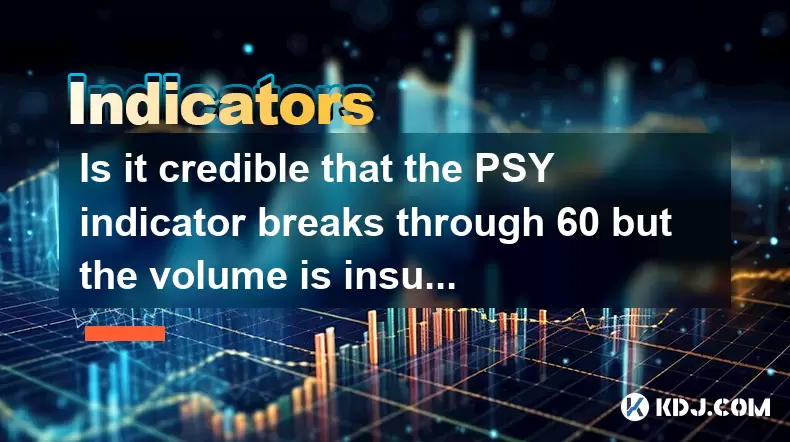
Is it credible that the PSY indicator breaks through 60 but the volume is insufficient?
Jun 14,2025 at 12:14am
Understanding the PSY Indicator in Cryptocurrency TradingThe Psychological Line (PSY) indicator is a momentum oscillator used primarily to measure the sentiment of traders and investors in financial markets, including the cryptocurrency space. It calculates the ratio of days where prices closed higher versus lower over a specified period, typically 12 o...
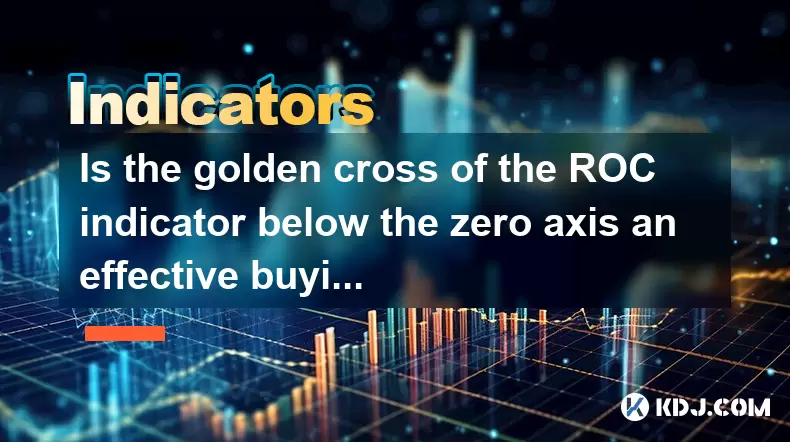
Is the golden cross of the ROC indicator below the zero axis an effective buying point?
Jun 14,2025 at 01:29am
Understanding the ROC Indicator and Its SignificanceThe Rate of Change (ROC) indicator is a momentum oscillator used in technical analysis to measure the percentage change in price between the current closing price and the closing price from a set number of periods ago. This tool helps traders assess the speed at which prices are changing, offering insi...

Will the RSI fall after the top divergence? How to improve the judgment accuracy?
Jun 13,2025 at 11:21pm
Understanding RSI and Top Divergence in Cryptocurrency TradingThe Relative Strength Index (RSI) is a momentum oscillator widely used in cryptocurrency trading to measure the speed and change of price movements. It typically ranges from 0 to 100, with levels above 70 considered overbought and below 30 considered oversold. In crypto markets, where volatil...
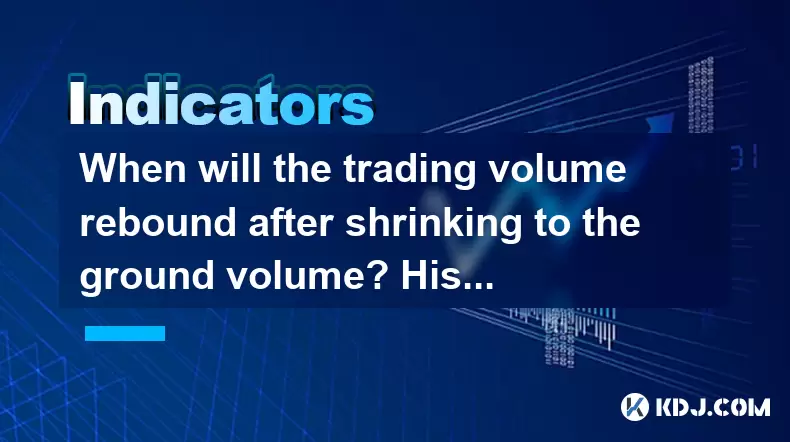
When will the trading volume rebound after shrinking to the ground volume? Historical percentile comparison method
Jun 13,2025 at 03:36pm
Understanding the Ground Volume Concept in Cryptocurrency MarketsIn cryptocurrency trading, 'ground volume' refers to a period when the trading volume of a particular asset or market drops significantly, often reaching multi-month or even multi-year lows. This phenomenon typically signals a lack of interest from traders and investors, suggesting that th...
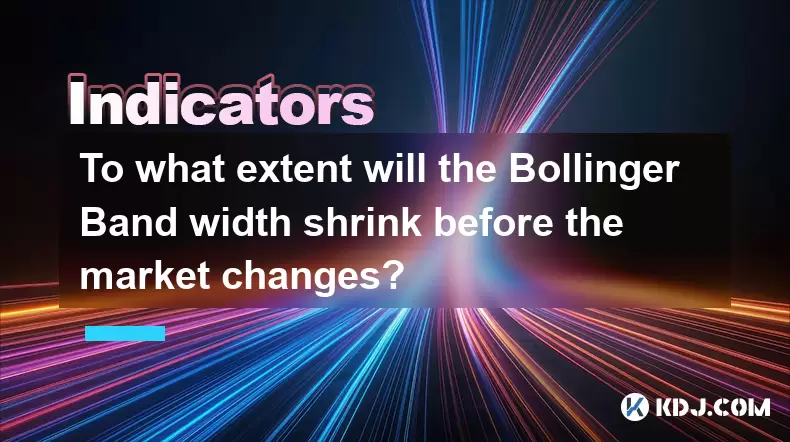
To what extent will the Bollinger Band width shrink before the market changes?
Jun 13,2025 at 06:35pm
Understanding the Bollinger Band Width and Its SignificanceThe Bollinger Band width is a critical technical analysis tool used in cryptocurrency trading to measure market volatility. It consists of three lines: a simple moving average (SMA), an upper band, and a lower band. The distance between the upper and lower bands reflects the level of volatility ...
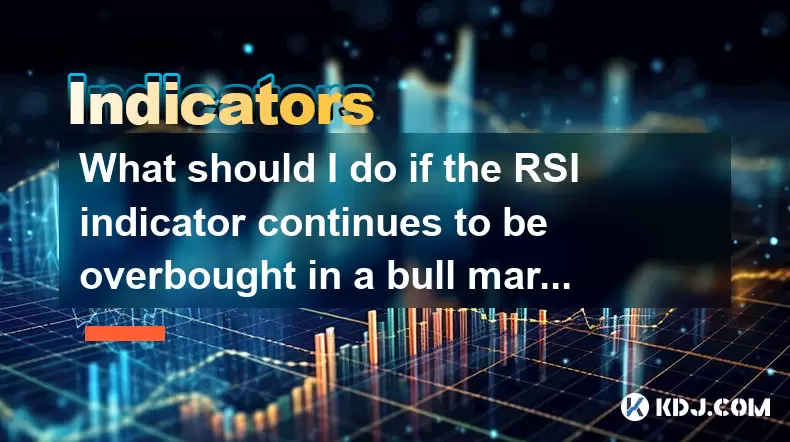
What should I do if the RSI indicator continues to be overbought in a bull market? How to adjust the overbought zone threshold?
Jun 13,2025 at 05:57pm
Understanding the RSI Indicator in a Bull MarketThe Relative Strength Index (RSI) is a momentum oscillator commonly used by traders to assess overbought or oversold conditions of an asset. In a bull market, especially within the cryptocurrency space, prices can remain elevated for extended periods. This often leads to the RSI indicator staying in the ov...

Is it credible that the PSY indicator breaks through 60 but the volume is insufficient?
Jun 14,2025 at 12:14am
Understanding the PSY Indicator in Cryptocurrency TradingThe Psychological Line (PSY) indicator is a momentum oscillator used primarily to measure the sentiment of traders and investors in financial markets, including the cryptocurrency space. It calculates the ratio of days where prices closed higher versus lower over a specified period, typically 12 o...

Is the golden cross of the ROC indicator below the zero axis an effective buying point?
Jun 14,2025 at 01:29am
Understanding the ROC Indicator and Its SignificanceThe Rate of Change (ROC) indicator is a momentum oscillator used in technical analysis to measure the percentage change in price between the current closing price and the closing price from a set number of periods ago. This tool helps traders assess the speed at which prices are changing, offering insi...

Will the RSI fall after the top divergence? How to improve the judgment accuracy?
Jun 13,2025 at 11:21pm
Understanding RSI and Top Divergence in Cryptocurrency TradingThe Relative Strength Index (RSI) is a momentum oscillator widely used in cryptocurrency trading to measure the speed and change of price movements. It typically ranges from 0 to 100, with levels above 70 considered overbought and below 30 considered oversold. In crypto markets, where volatil...

When will the trading volume rebound after shrinking to the ground volume? Historical percentile comparison method
Jun 13,2025 at 03:36pm
Understanding the Ground Volume Concept in Cryptocurrency MarketsIn cryptocurrency trading, 'ground volume' refers to a period when the trading volume of a particular asset or market drops significantly, often reaching multi-month or even multi-year lows. This phenomenon typically signals a lack of interest from traders and investors, suggesting that th...

To what extent will the Bollinger Band width shrink before the market changes?
Jun 13,2025 at 06:35pm
Understanding the Bollinger Band Width and Its SignificanceThe Bollinger Band width is a critical technical analysis tool used in cryptocurrency trading to measure market volatility. It consists of three lines: a simple moving average (SMA), an upper band, and a lower band. The distance between the upper and lower bands reflects the level of volatility ...

What should I do if the RSI indicator continues to be overbought in a bull market? How to adjust the overbought zone threshold?
Jun 13,2025 at 05:57pm
Understanding the RSI Indicator in a Bull MarketThe Relative Strength Index (RSI) is a momentum oscillator commonly used by traders to assess overbought or oversold conditions of an asset. In a bull market, especially within the cryptocurrency space, prices can remain elevated for extended periods. This often leads to the RSI indicator staying in the ov...
See all articles





















